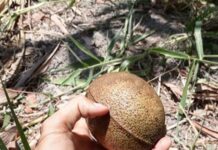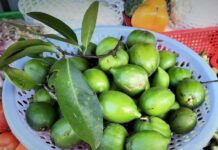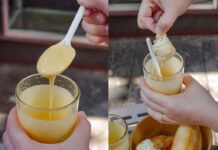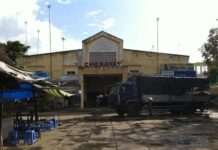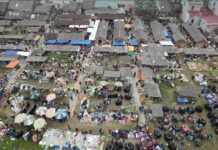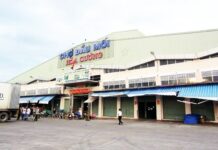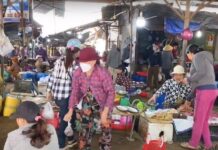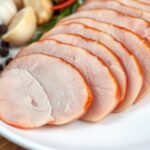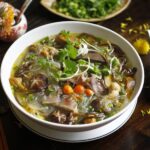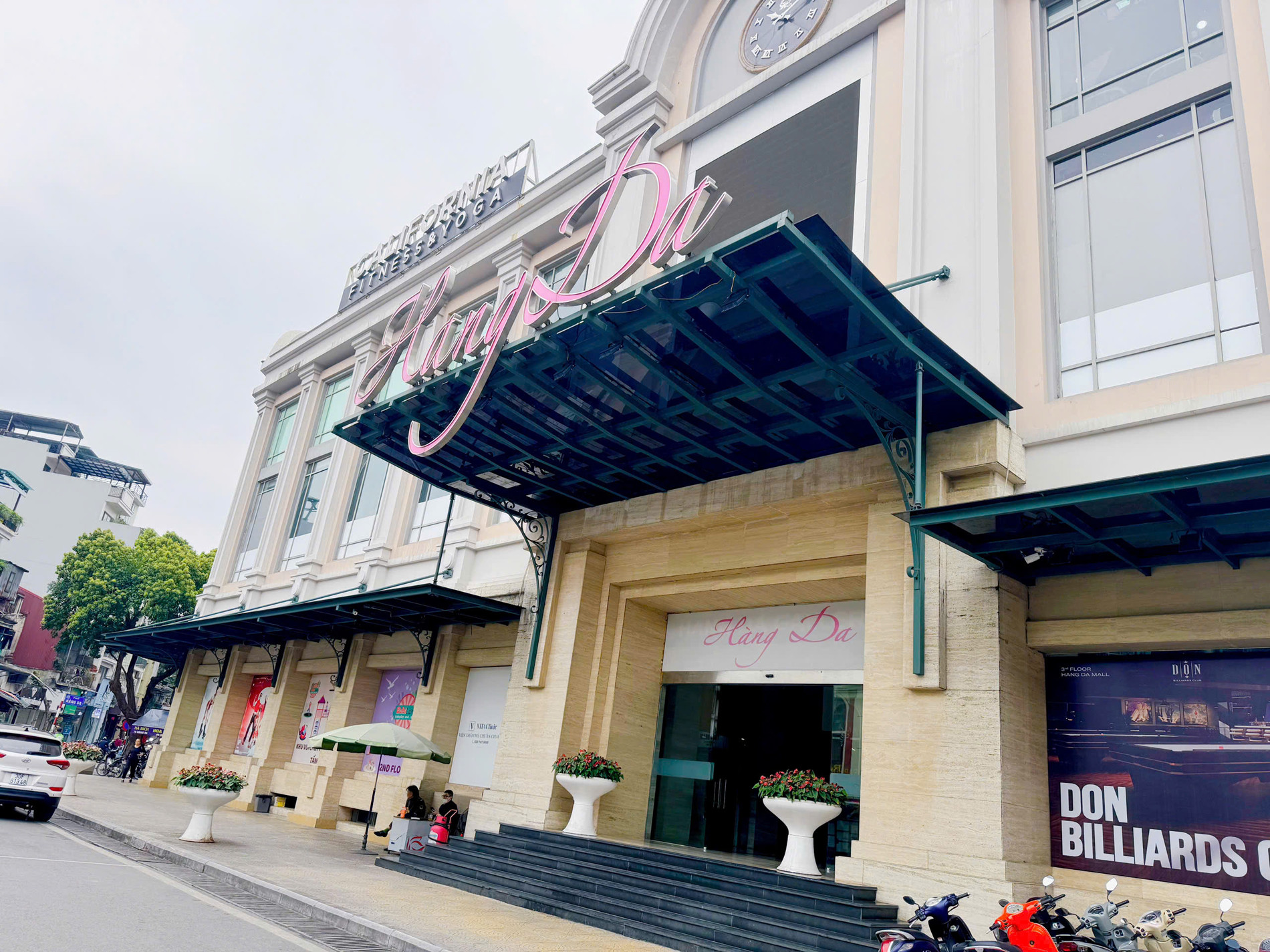
The Hanoi underground market, formerly known as Cho Hang Da, has a long and vibrant history. Once a bustling marketplace with multiple entrances onto bustling streets, it was reorganized into four main sections: fresh produce, food stalls, clothing, and miscellaneous goods.
Cho Hang Da, or the “shopping paradise” as locals affectionately called it, was a dense network of stalls offering a diverse range of products.
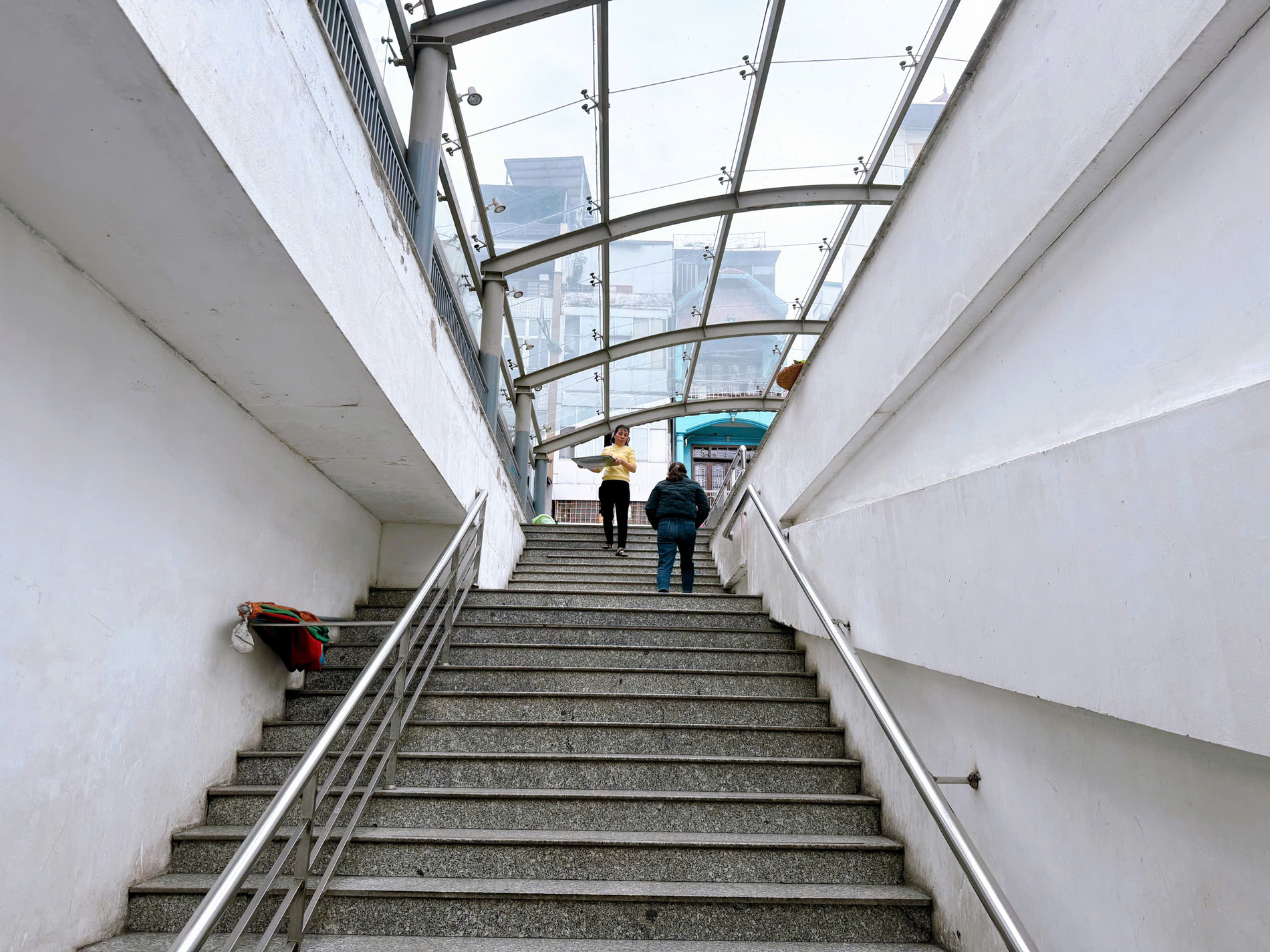
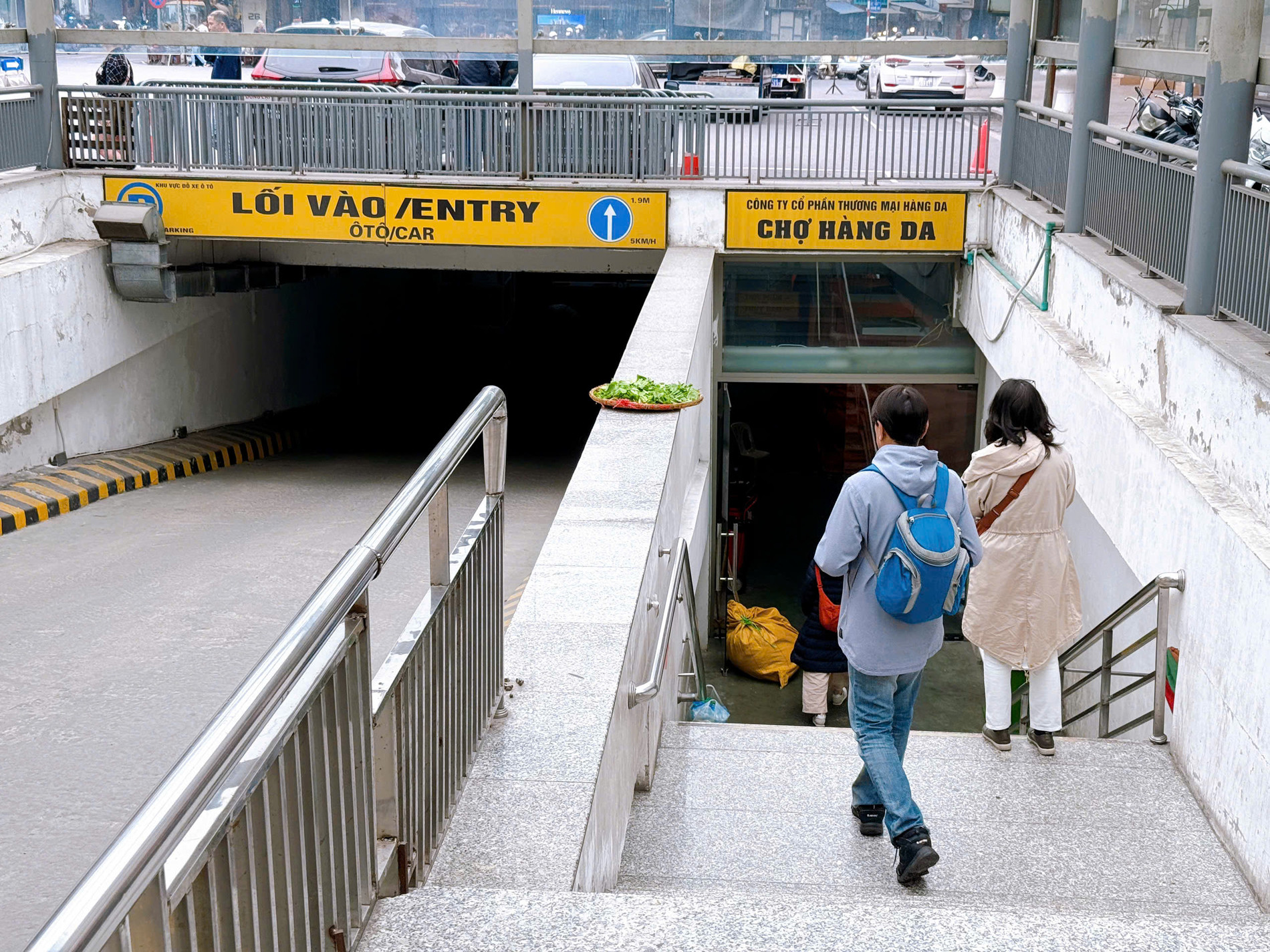
In 2010, Cho Hang Da underwent a significant transformation. It was redeveloped into a modern commercial center, now known as the Hang Da Trade Center, featuring five floors above ground and two basement levels.
The market itself was relocated to the basement of this new complex, earning it the endearing nickname of the “underground market” among locals and tourists alike.
Hang Da Market offers a wide variety of goods, neatly organized into dedicated sections for dry goods, fresh produce, clothing, fabrics, and souvenirs.
The ceramics and handicrafts stalls are particularly popular among foreign tourists, who often visit to admire and purchase these unique, locally crafted items.
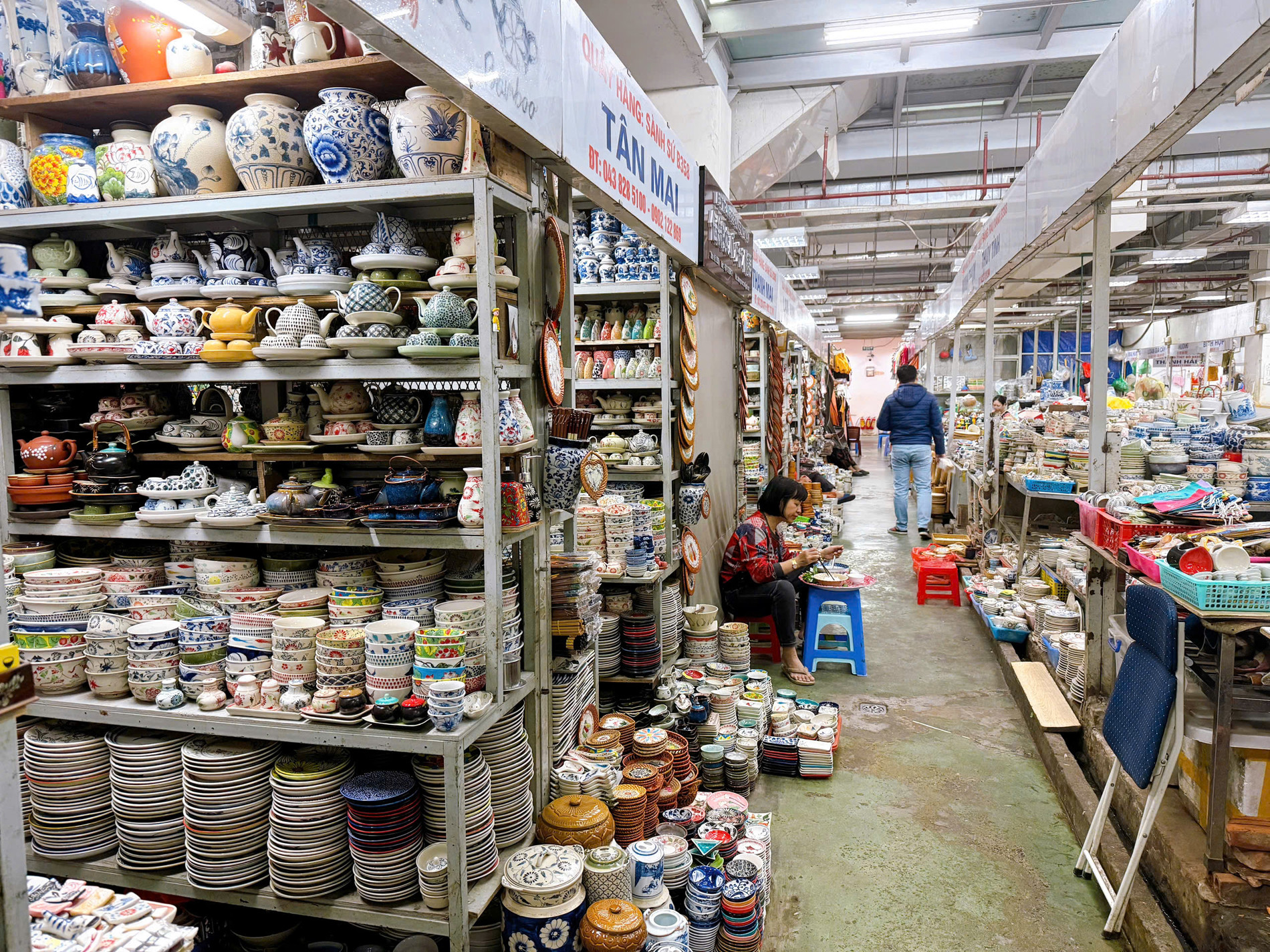
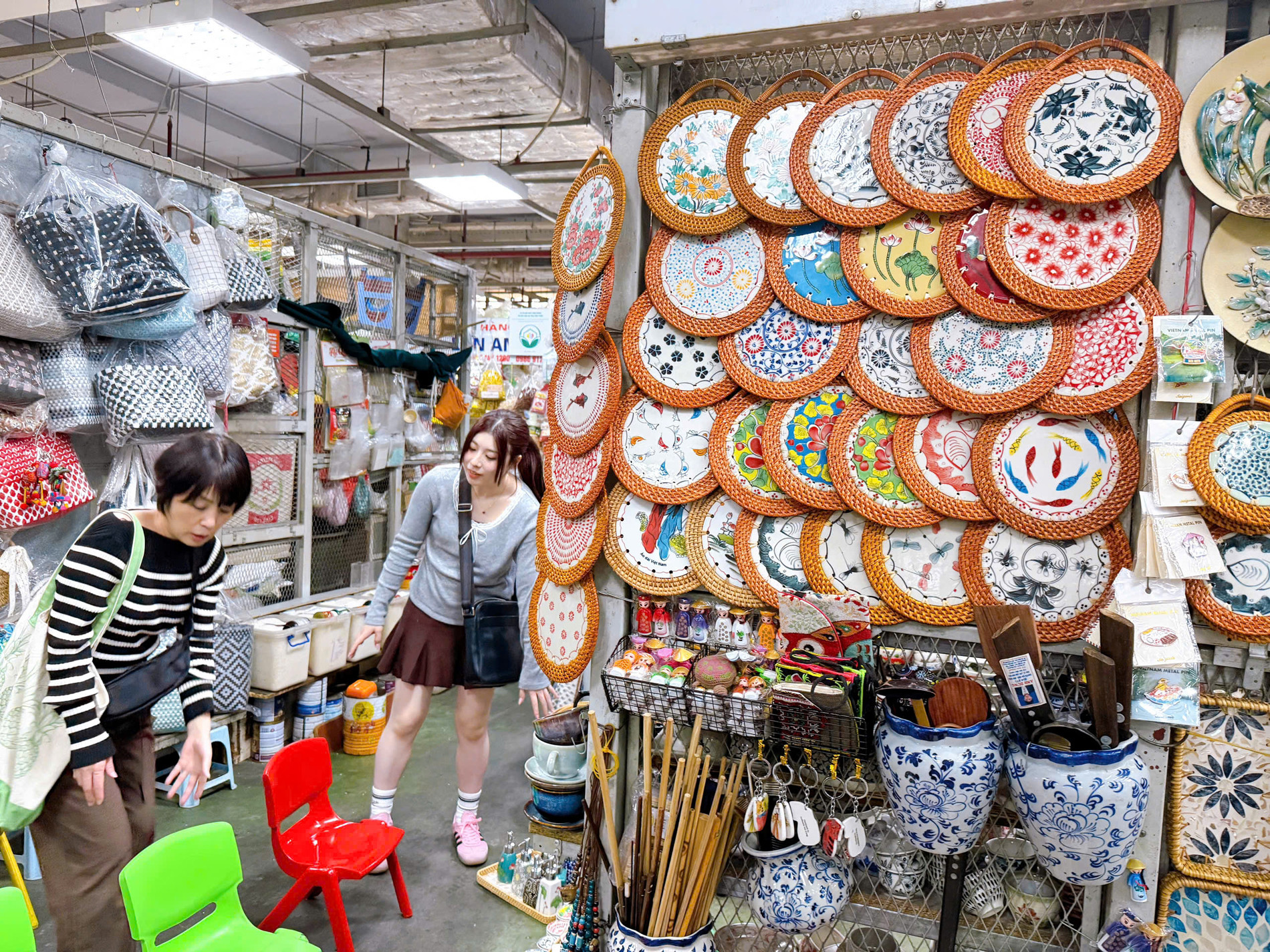
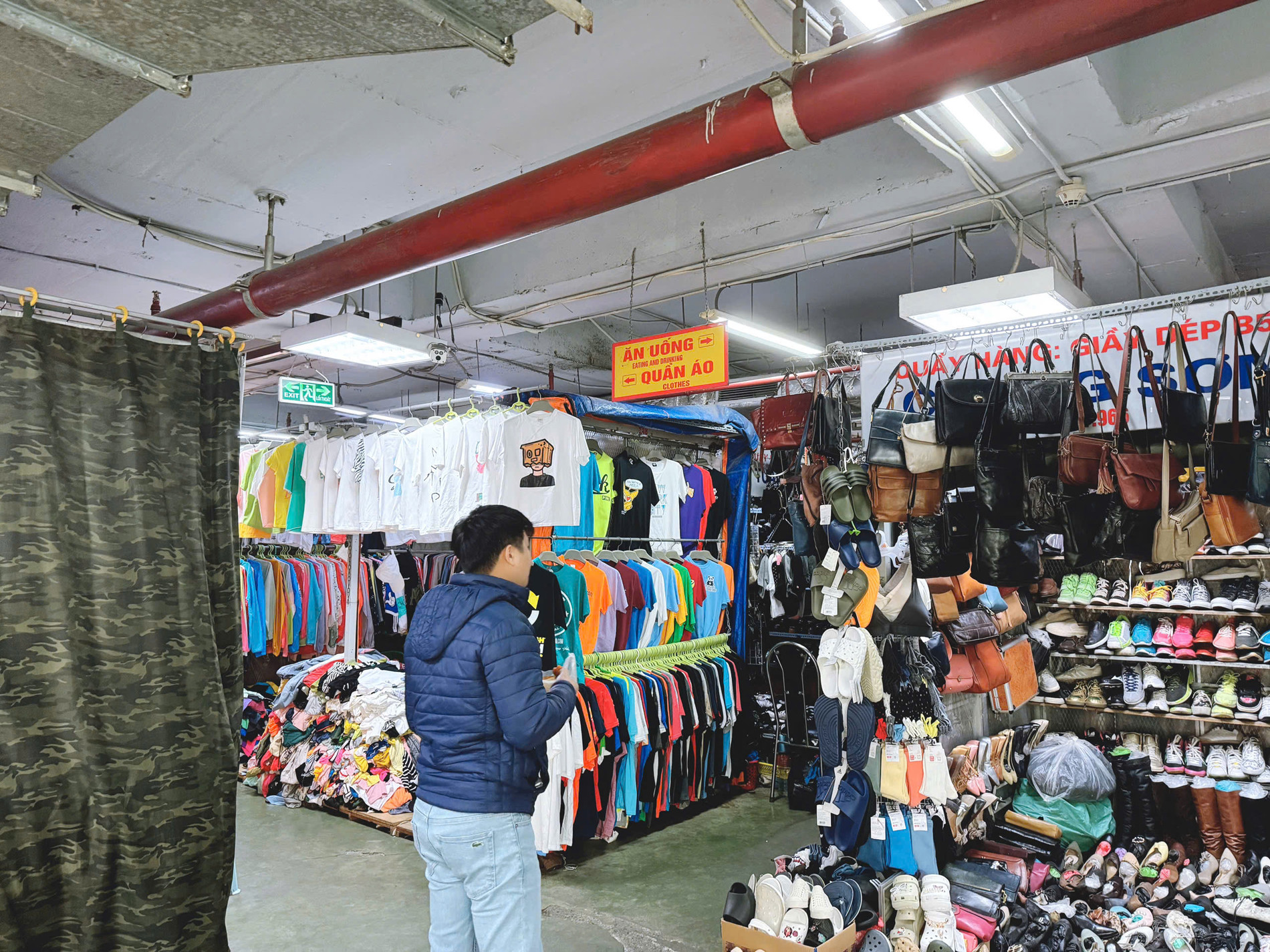
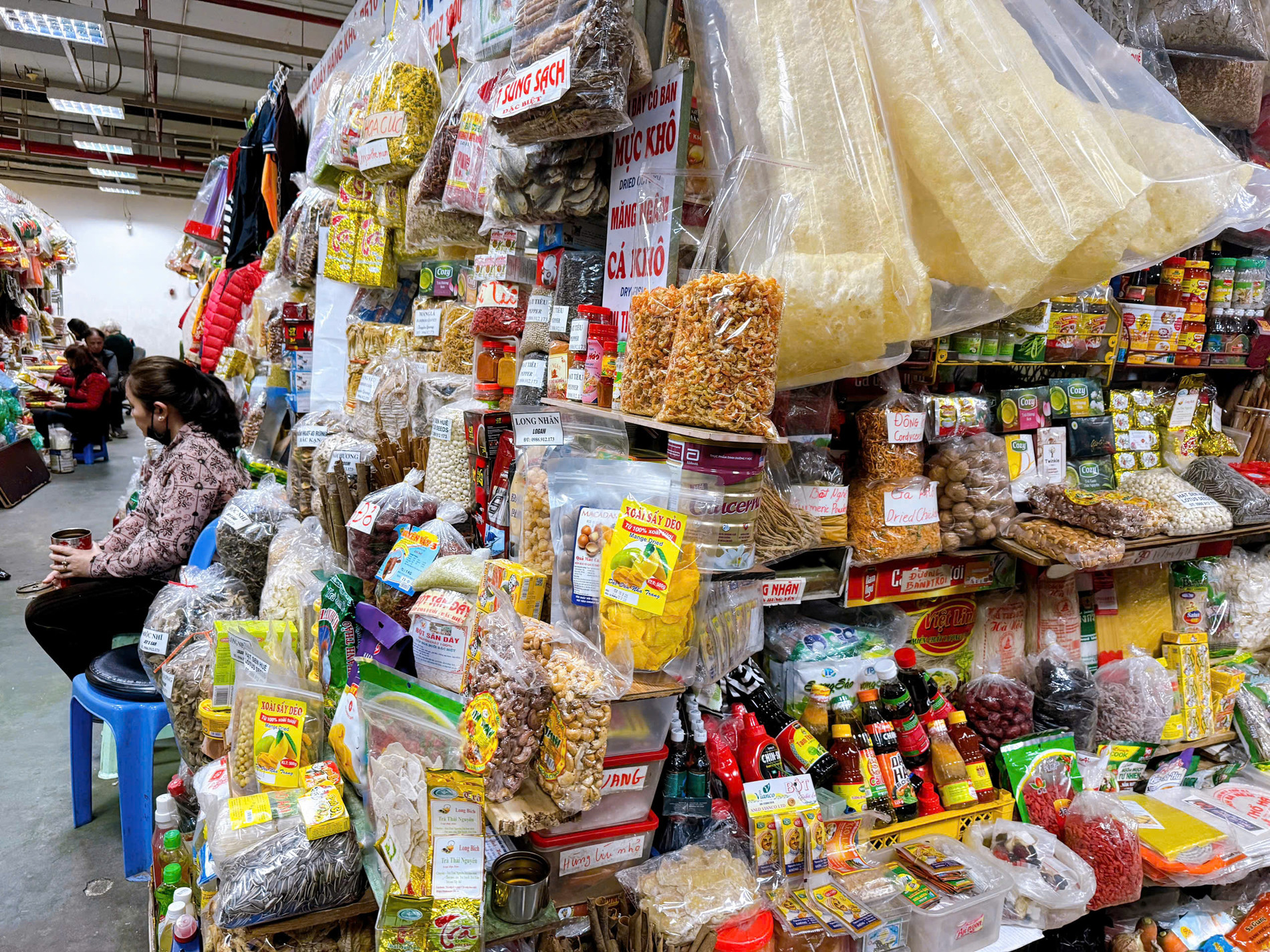
According to some of the market vendors, daily customer footfall has decreased over the years, with most visitors being tourists interested in browsing and purchasing souvenirs. The decline in local shoppers is attributed to the inconvenience of having to park their vehicles and descend to the basement level to access the market. Additionally, the surrounding area has seen the emergence of numerous temporary markets and street vendors offering a wide range of goods.
“The market’s location is not very convenient, with its entrance tucked away and hard to find. Being in the basement also makes the space feel confined and stuffy,” shared a concerned vendor.
Visitors and locals alike face challenges finding parking spaces, and the frequent lack of available parking further discourages potential customers from venturing into the underground market, as explained by the vendor.
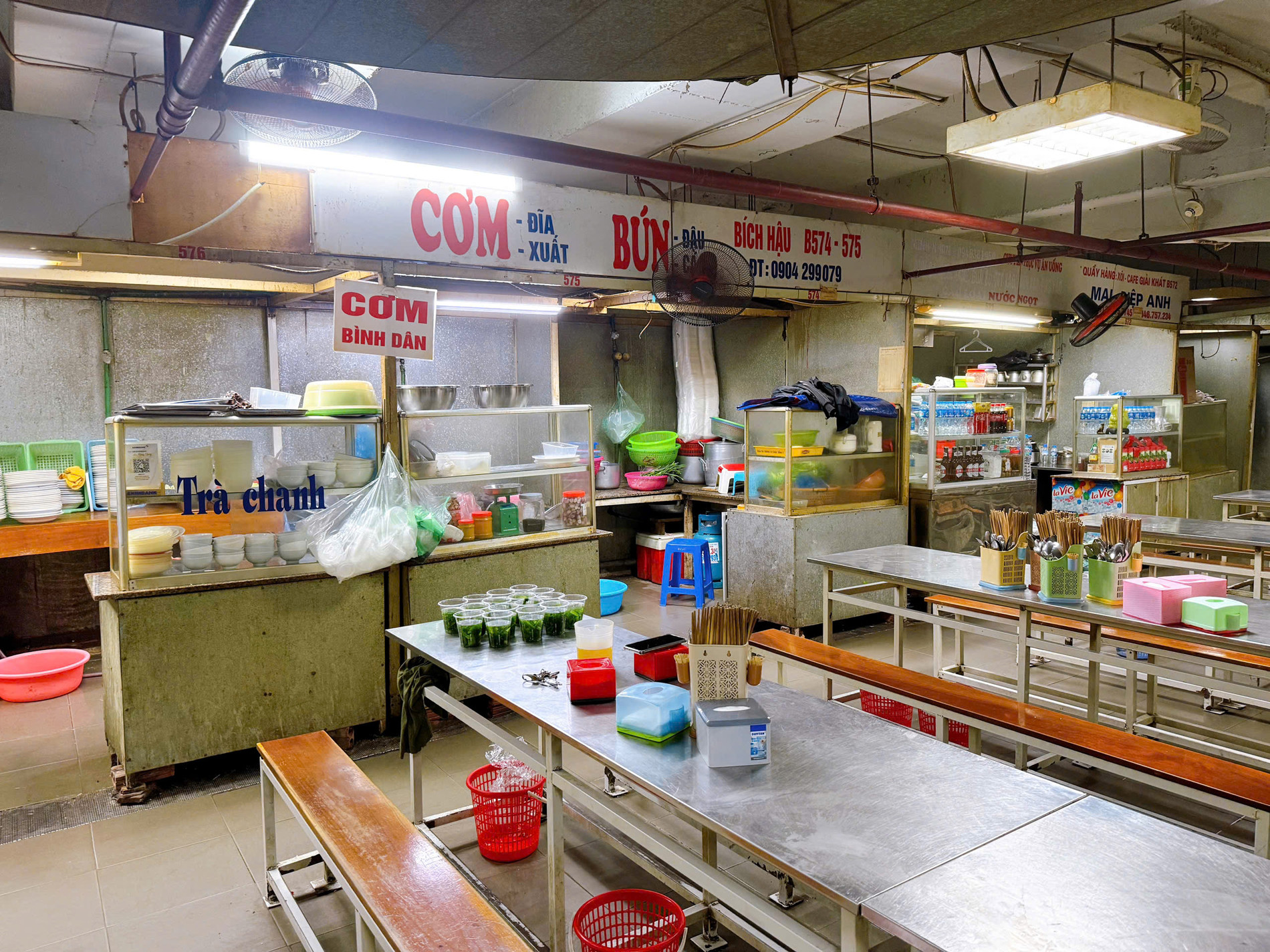
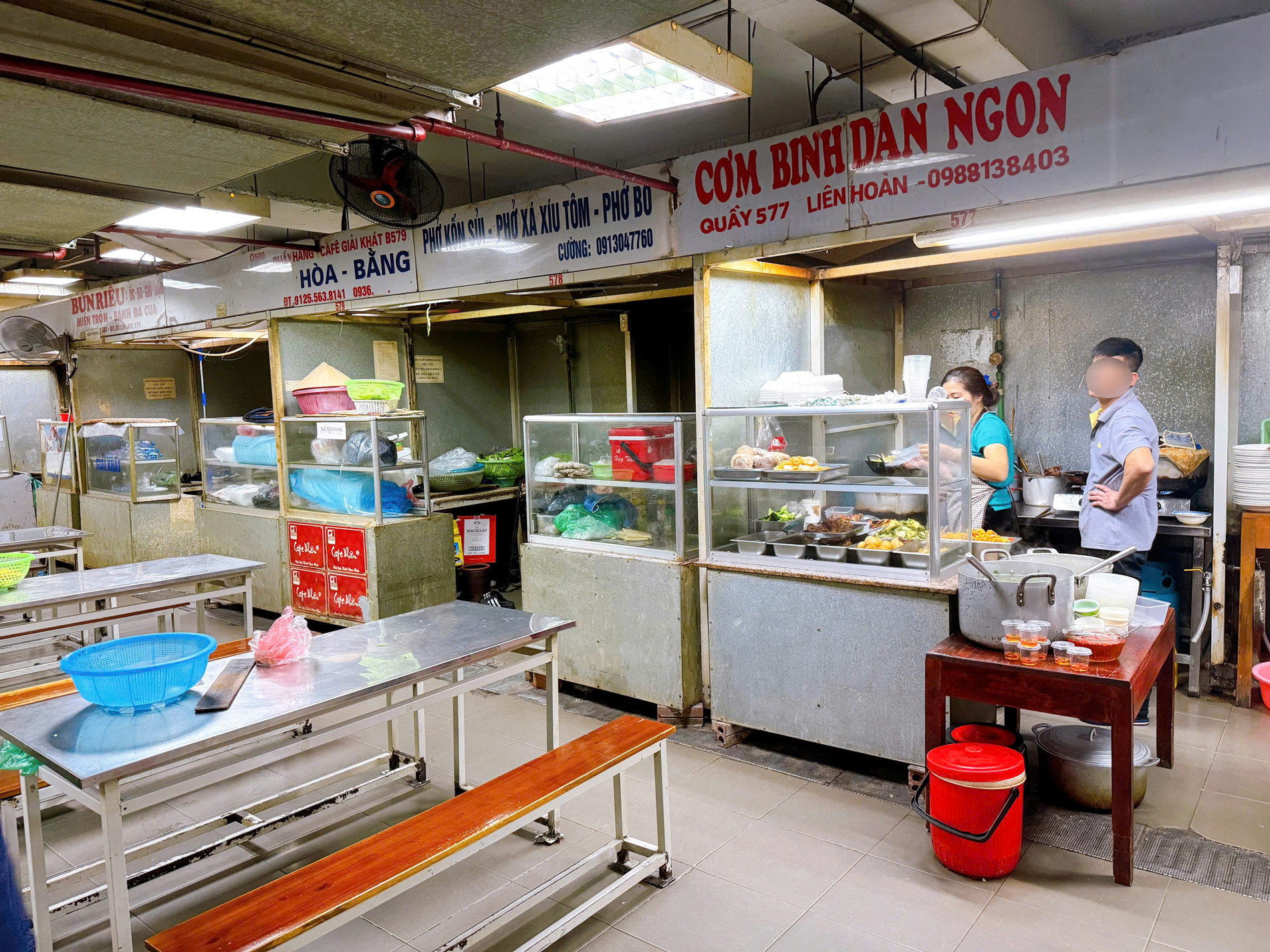
Despite these challenges, the underground market’s food court has become a beloved destination for many, especially during lunchtime. Although it may be more modest in size compared to other traditional market food courts, it offers a delightful variety of dishes.
For those seeking a heartier meal, there are plenty of options, including rice dishes, bun rieu cua (crab and tomato noodle soup), pho ga (chicken noodle soup), bun thang (rice vermicelli with chicken and egg), mie luon (rice noodles with eel), porridge, bun bo (beef noodle soup), xoi (sticky rice), mie xao (fried noodles), and bun gia cay (spicy mock pork noodle soup).
The food court also caters to those looking for snacks or lighter fare, offering dishes such as mixed noodles, pho xa xu (barbecued pork noodle soup), goi cuon (fresh spring rolls), nom bo kho (spicy beef salad), and various types of che (sweet soups) and drinks.
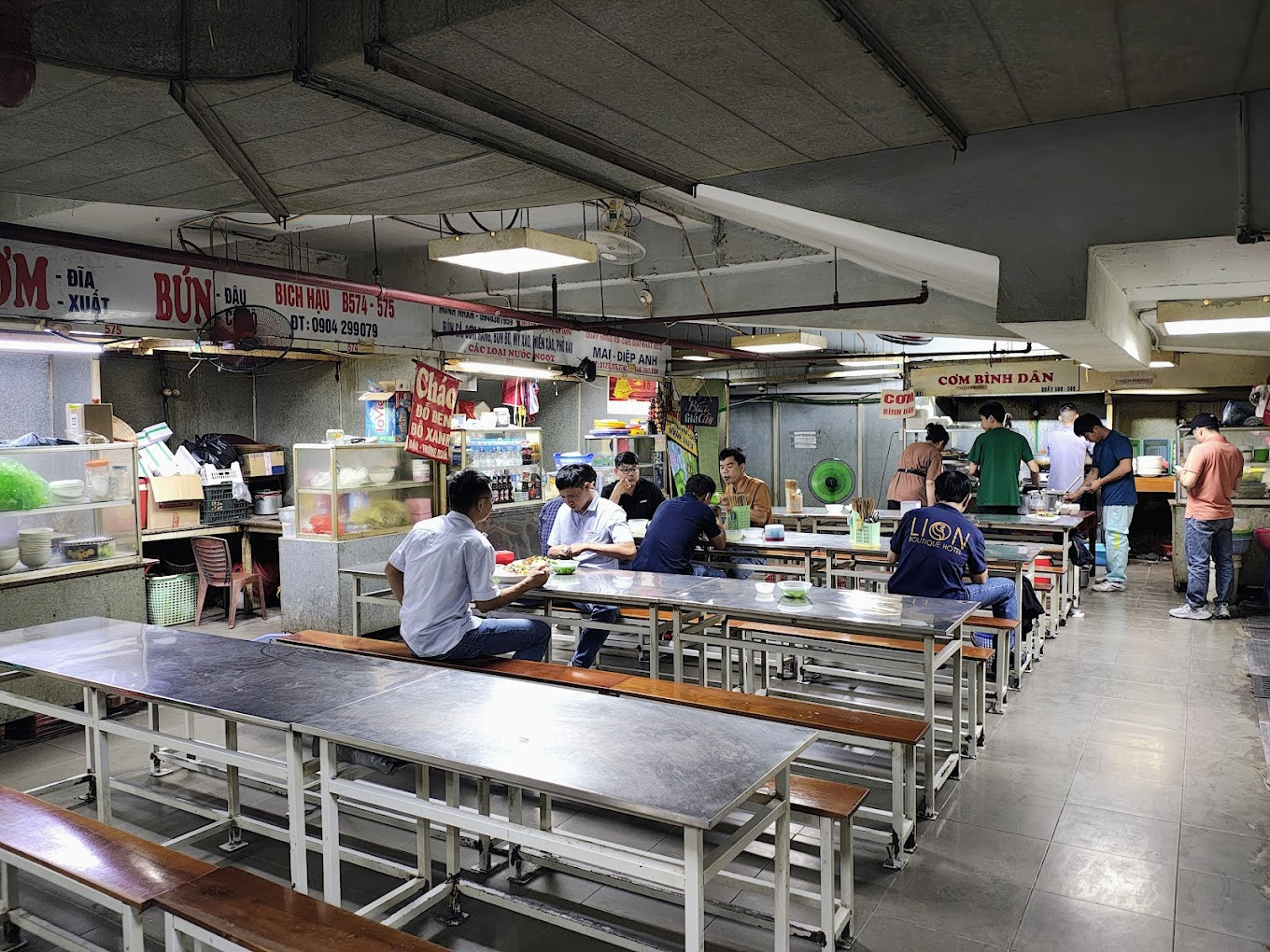
The market offers a diverse range of dishes, from rice-based meals to noodles, pho, and snacks.
Patrons of the underground market’s food court appreciate the variety of options catering to different tastes and age groups. The affordable pricing is another attractive feature, with most dishes costing between VND 20,000 and VND 40,000.
With VND 100,000, diners can easily enjoy a satisfying meal comprising two to three dishes. For instance, a bowl of mie luon costs VND 35,000, pho ga is priced at VND 35,000, and a bowl of black bean porridge is VND 20,000.
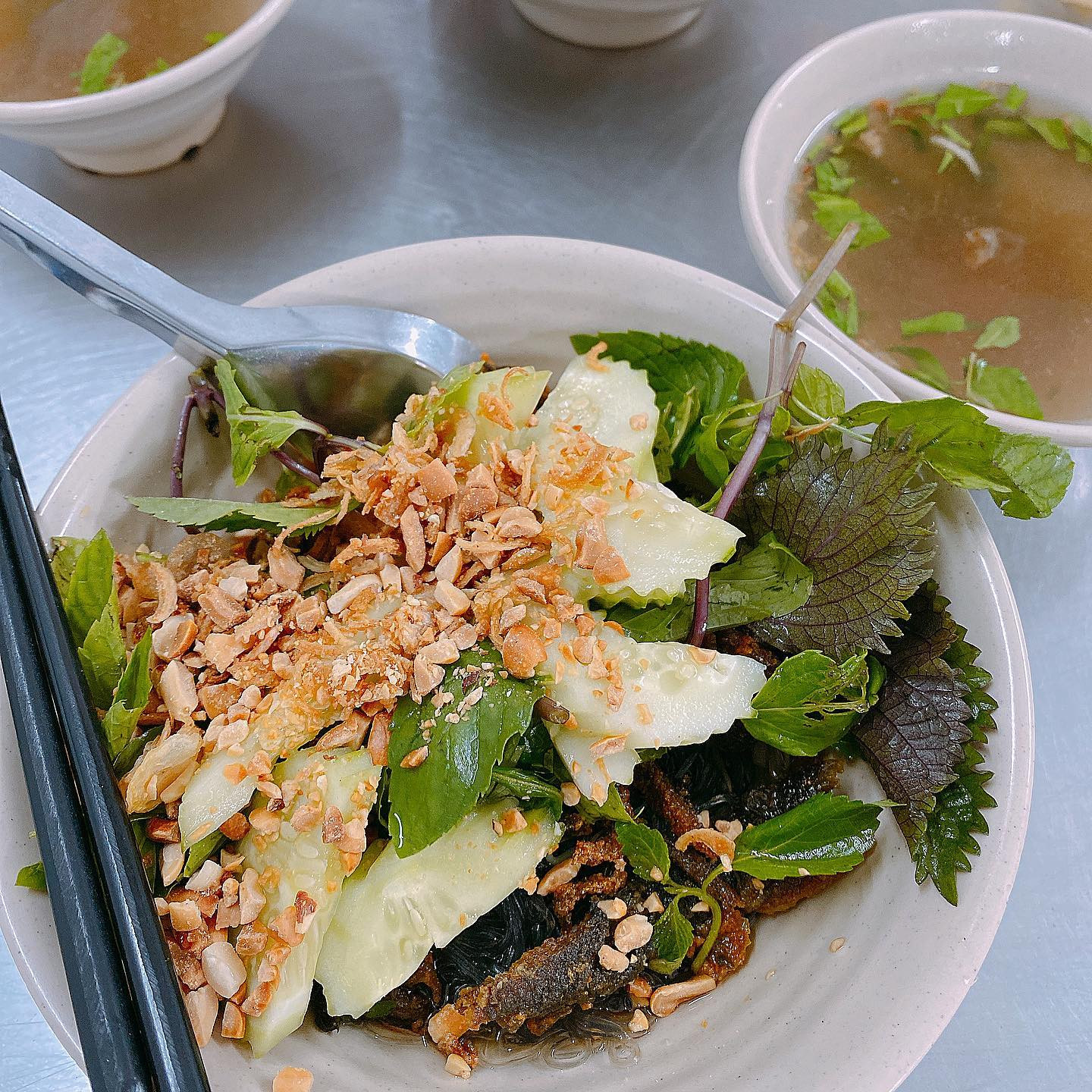
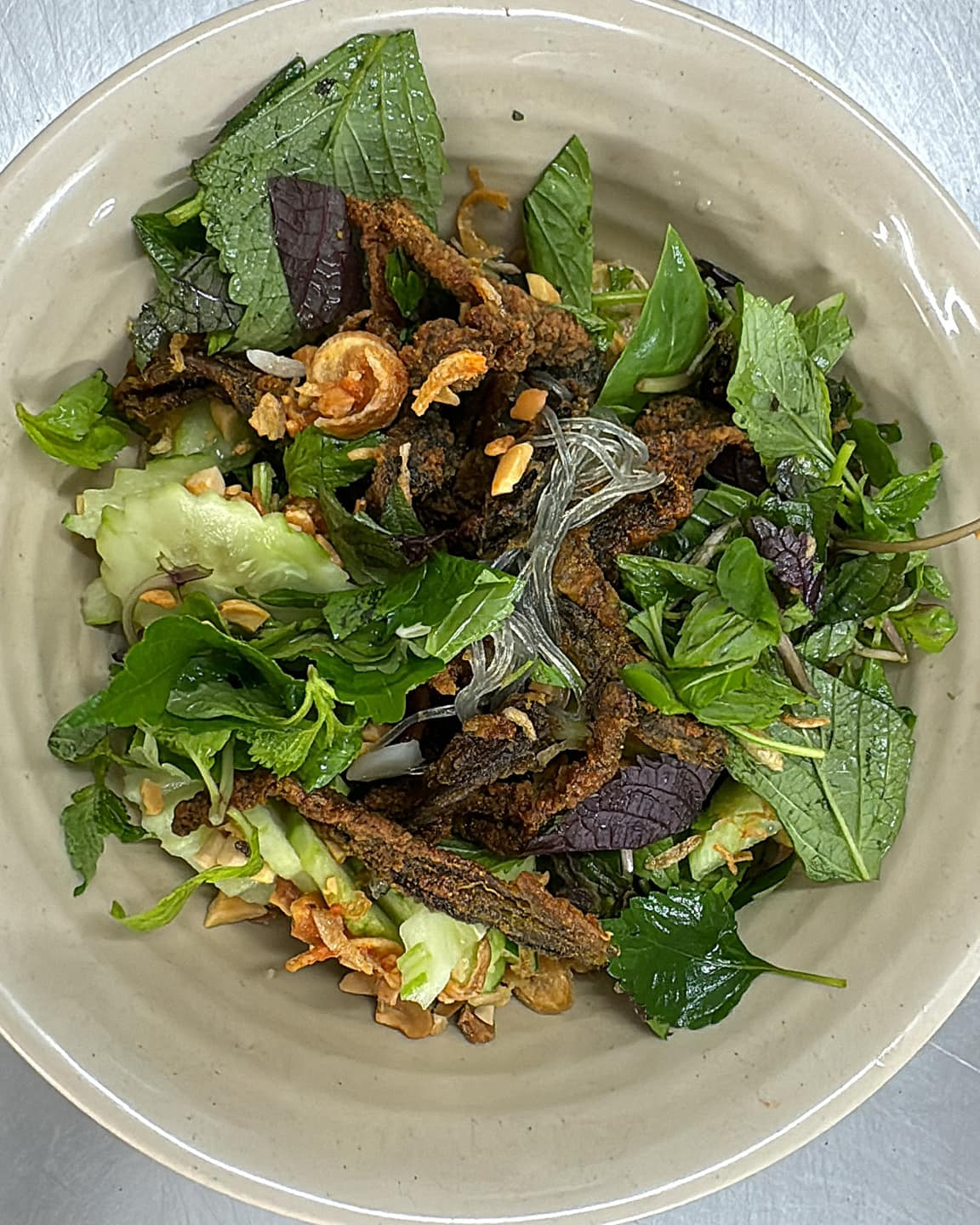
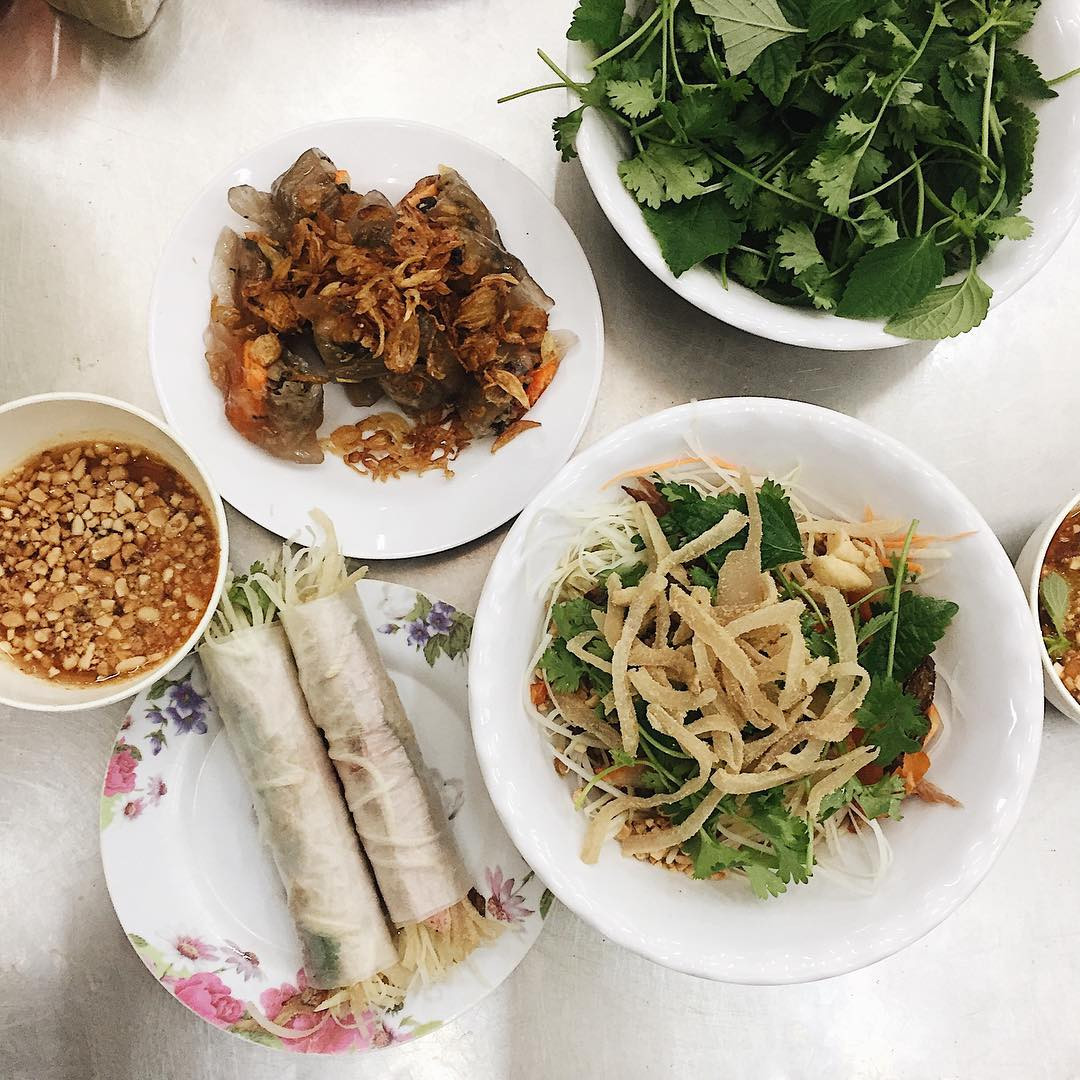
A selection of affordable dishes from the underground market’s food court.
Ayumu, a tourist from Japan, shared her experience of visiting the underground market on two separate occasions. With a keen interest in Southeast Asian culture and artifacts, she was drawn to the market’s colorful and intricately patterned cups and dishes.
During her visits, she also dined at the food court, particularly enjoying a bowl of mie luon for VND 35,000. Comparing her experience with other traditional markets in Hanoi, such as Cho Mo and Cho Dong Xuan, Ayumu noted that the dining area at Cho Hang Da felt more cramped and offered fewer choices.
However, she found the food to be unique and reasonably priced, concluding that it was well worth the visit.
The Pork Cut Treasured by American Experts: A Nutritional Powerhouse Equivalent to Chicken Breast, Beloved in Vietnamese Cuisine.
Pork, a staple meat in Vietnamese cuisine, has been lauded by American nutrition experts for its nutritional value, even drawing comparisons to chicken breast. This cut of meat is now being hailed as a nutritional powerhouse, with a protein content comparable to that of chicken. Discover the nutritional secrets and learn how to prepare this versatile meat.
Unveiling the Mystical and Beautiful Mountain in Dong Nai, a Year-Round Tourist Hotspot Nicknamed the “Dalat of the South-Eastern Region”.
Nestled amidst lush mountains and verdant forests, this idyllic destination boasts a temperate climate thanks to its elevation of over 800 meters above sea level. Aptly likened to Dalat of the South-Central region, this hidden gem offers a serene escape for travelers seeking spiritual enlightenment and immersion in pristine nature.
















